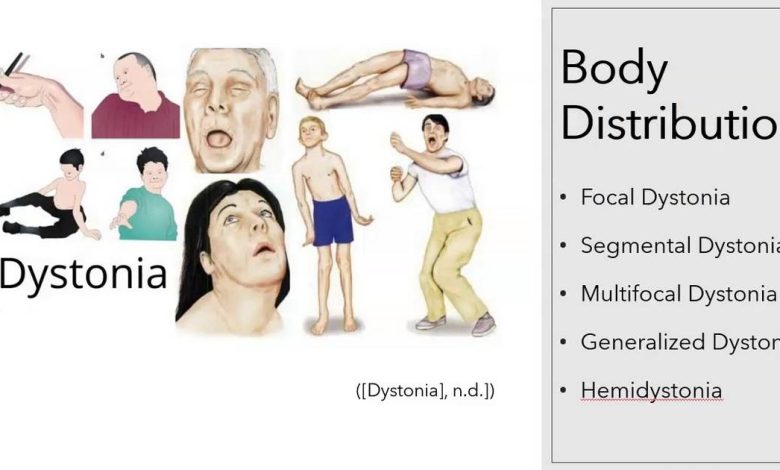Dystonia, uncontrolled contractions of muscle groups: what is this, causes, symptoms, diagnostics, treatment, prevention

Movement – uncontrolled or slow; Dystonia; Involuntary slow and twisting movements; Choreoathetosis; Leg and arm movements – uncontrollable; Arm and leg movements – uncontrollable; Slow involuntary movements of large muscle groups; Athetoid movements
What is dystonia?
Dystonia is a neurological disorder, characterized by involuntary muscle contractions, that cause slow, prolonged muscle spasms and twisting of the body into abnormal postures. This chronic disease affects people of all ages., but most common in young people.
Dystonia is a debilitating condition, which can significantly impair quality of life and interfere with daily activities.
Causes of dystonia
The exact cause of dystonia is unknown., but there are many factors, that may play a role in its development.
In some cases, dystonia is genetic and may be caused by a gene mutation, responsible for controlling muscle movement.
Other causes may include head trauma, stroke, infections and exposure to certain toxins or drugs.
In some cases, the cause may be idiopathic, meaning, that the cause is unknown.
Symptoms of dystonia
Symptoms of dystonia vary depending on the type and severity of the disorder..
Common symptoms include muscle spasms, twisting the body into abnormal postures and slow, prolonged muscle contractions.
Dystonia can also cause speech difficulties, walking and writing, as well as tremors and twitches. Dystonia can also cause pain and fatigue.
Diagnosis of dystonia
The diagnosis of dystonia is based on a thorough physical examination and medical history..
During the physical examination, the doctor will assess muscle strength and notice any abnormal postures or movements..
The doctor may also order laboratory tests., imaging tests and/or electromyogram (DOH), to help diagnose the condition.
Treatment of dystonia
Treatment for dystonia depends on the type and severity of the disorder..
In some cases, medications may be prescribed to relieve symptoms., such as muscle relaxants, anticonvulsants and botulinum toxin injections.
Physiotherapy, occupational therapy and speech therapy may also be recommended to improve functioning and quality of life.
In some cases, surgery may be required to treat this condition..
Prevention of dystonia
Because the exact cause of dystonia is unknown, there is no known way to prevent this condition.
Nonetheless, there are some steps, you can take, to reduce the risk of developing dystonia. These steps include preventing head injuries., stress management, regular exercise and a healthy diet.
Besides, avoiding exposure to certain toxins and medications may also help reduce the risk of dystonia.
Used sources and literature
Jankovic J, Just AE. Diagnosis and assessment of Parkinson disease and other movement disorders. In: Jankovic J, Mazziotta JC, Pomeroy SL, Newman NJ, eds. Bradley and Daroff’s Neurology in Clinical Practice. 8th ed. Philadelphia, PA: Elsevier; 2022:chap 24.
Okun MS, Just AE. Other movement disorders. In: Goldman L, Schafer AI, eds. Goldman-Cecil Medicine. 26th ed. Philadelphia, PA: Elsevier; 2020:chap 382.
